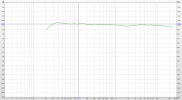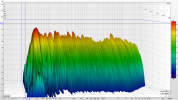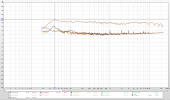I don't think you understand what I did there, maybe read it again? the direct sound IS (kind off-ish) the anechoic response in my LP
btw: my room has a lot of absorbtion, 6 corners, sidewalls, ceiling, 3/4 of backwall....Harman test subjects would create a totaly diferent curve in my room
I'm pretty sure your room isn't anechoic. But perhaps I'm misunderstanding. Have you completely covered all surfaces in the room? Can you post a waterfall of the direct response perhaps.
EDIT: Either way the point stands that a flat curve like this shouldn't be the target curve for 99% of home systems out there, they should aim for a 1dB/Octave drop.
Last edited:



